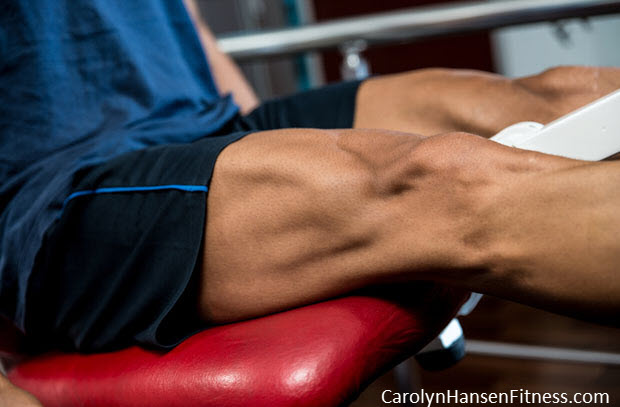Because muscles go through intensive physical stress when we exercise, any type of strenuous physical activity will likely cause some sort of muscle soreness afterward. Normally felt after a new activity as a dull, aching pain with tenderness and stiffness in the muscle affected.
There are two types of muscle soreness. Acute muscle soreness which is felt immediately and DOMS, or “delayed onset muscle soreness.”
DOMS
Delayed onset muscle soreness also referred to as “muscle fever” is something that even die-hard body builders experience at times. It occurs when muscle tissue is stressed beyond what it is used to. It can affect any part of the body that’s been exposed to intense new or unfamiliar physical activity. In other words, a new workout will cause small tears in the muscle and the end result is pain and stiffness lasting several hours to a few days after. The soreness from DOMS generally increases the first 24 hours after working out, reaches a peak and then begins to disappear and heal.
Although any type of muscle contraction can cause soreness, exercises that place a greater emphasis on eccentric – the stretching or lengthening phase – are thought to be the biggest contributors to DOMS. This is due to the the micro-trauma caused to the muscle fibers.
Research suggests that DOMS is “the result of pain receptors being sensitized by the inflammatory response to muscle tissue damage.” For the most part, it is only felt when the muscle continues to be stretched or put under pressure not while resting. But it can be so severe at times that it is actually mistaken for “muscle strain.”
Acute muscle soreness
On the other hand, acute muscle soreness is the type of pain you feel immediately after exercise as opposed to DOMS which comes on slower during the first 24 to 72 hours afterward. It oftentimes makes its initial appearance felt after sleeping. You might start feeling the effects as soon as 6-8 hours afterward. It can be very discouraging especially to those just starting out.
Remember, even seasoned athletes are subject to DOMS if they train harder than normal. What you are feeling is “part of the program – it is perfectly normal.”
Although “eccentric” contractions are believed to cause DOMS more readily than concentric contractions. There are other factors such as personal genetics that come into play. Even dehydration can contribute to DOMS making it much worse.
Without a doubt, the onset of DOMS is most pronounced when starting a new increased activity/workout. In other words, your first day working your new routine will produce the most painful results but every workout after that your muscles build up stronger and your soreness begins to subside.
Muscle soreness is the most common result of DOMS. You may also feel joint stiffness, diminished muscle capacity and a reduced range of motion. Since muscles get larger and stronger when they repair themselves, a certain level of discomfort and soreness is necessary. However if you try and do the same exercise after 3 days’ time and you still feel muscle soreness. Listen to your body – you’ve pushed too hard too quickly.
Common treatments:
(help alleviate the pain and get back to business)
Time to recover: In the end you will build more muscle, strength and endurance if you give your muscles the proper time to recoup and recover.
Contrast showering: Alternating between cold and hot showers helps
Protein intake: Increasing protein intake helps to increase protein synthesis
Omega-3: Supplementing with Omega-3’s can help to reduce inflammation and helps with sleep
Epsom salts: Warm water baths with Epsom salts added can help to ease muscle discomfort and speed healing.
The most important tip of all is to focus on your diet. Does it include all the nutrients required to help your body heal?
It isn’t easy trying to figure out everything you need to do to preserve your health and extend your longevity. Proper diet and working your muscles through a program of strength training is two of those.
It’s time to throw away all the false statements you’ve accepted about dieting and exercise. Start with a fresh slate and learn what it really takes to stay healthy and fit.
“Reclaim Your Longevity” can help you do just that…
For more tools and resources from Carolyn Hansen to assist you in attaining your health and fitness goals you desire in life, please visit:


